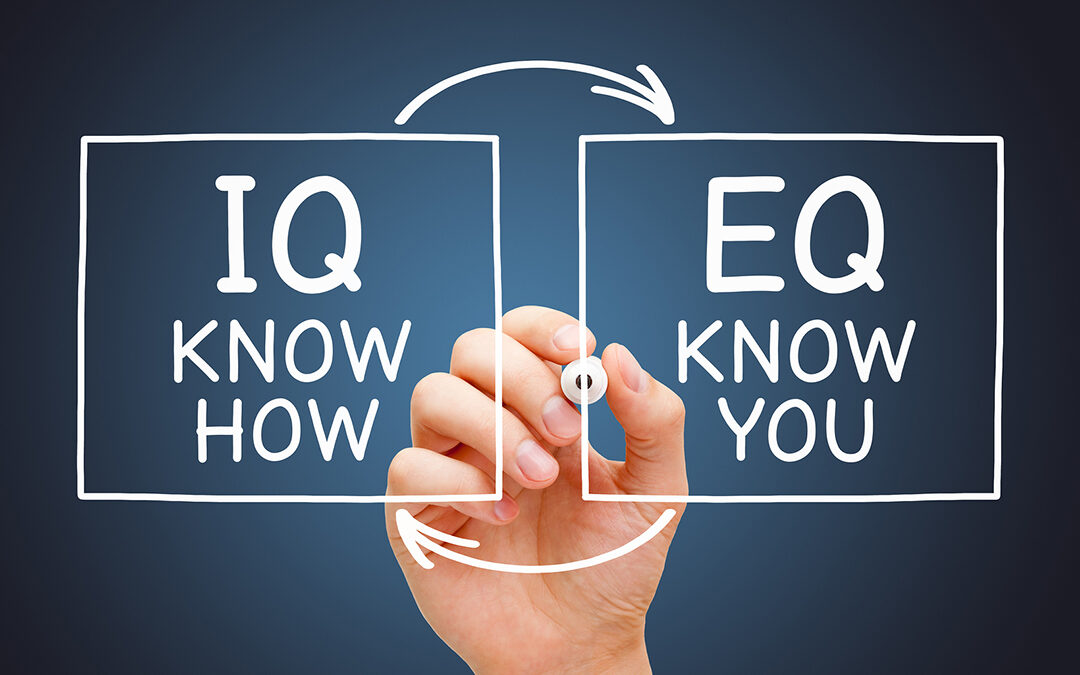Emotional Intelligence has its roots in the concept of “social intelligence” which was first identified by E. L. Thorndike in 1920 (Ruisel, 1992). According to Ruisel, psychologists have been uncovering intelligences and grouping them mainly into three clusters or categories: abstract intelligence (the ability to understand and manipulate with verbal and mathematic symbols), concrete intelligence (the ability to understand and manipulate with objects), and social intelligence (the ability to understand and relate to people).
Researchers have investigated dimensions of emotional intelligence (EI) by measuring related concepts, such as social skills, interpersonal competence, psychological maturity, and emotional awareness, long before the term “emotional intelligence” came into use. Mayer et al (2000), conclude that emotional intelligence does meet the criteria to be considered an important factor on which general intelligence is based. They go on to state “Perhaps a general intelligence that includes emotional intelligence will be a more powerful predictor of important life outcomes than one that does not”.
Emotional Intelligence began appearing in academic literature in the 1980’s. Mayer, Salovey, and Caruso (2000), suggest that emotional intelligence is “the ability to process emotional information, particularly as it involves the perception, assimilation, understanding, and management of emotion”. They explain that it consists of four branches of mental ability.
- Emotional Perception – involves such abilities as identifying emotions in faces, music, and stories.
- Emotional Facilitation of Thought – involves such abilities as relating emotions to other mental sensations such as taste and color, and using emotion in reasoning and problem solving.
- Emotional Understanding – involves solving emotional problems such as knowing which emotions are similar, or opposites, and what relations they convey.
- Emotional Management – involves understanding the implications of social acts on emotions and the regulation of emotion in self and others.
Mayer and Salovey expand upon their earlier definition to suggest it involves the ability to perceive accurately, appraise, and express emotion; the ability to access and/or generate feelings when they facilitate thought; the ability to understand emotion and emotional knowledge; and the ability to regulate emotions to promote emotional and intellectual growth. The following are further clarifications of their definitions.
Perception, Appraisal and Expression of Emotion
Ability to identify emotion in one’s physical states, feelings, and thoughts.
Ability to identify emotion in other people, designs, artwork, etc. through
language, sound, appearance, and behavior.
Ability to express emotions accurately, and to express needs related to those feelings.
Ability to discriminate between accurate and inaccurate, or honest vs.
dishonest expressions of feeling.
Emotional Facilitation of Thinking
Emotions prioritize thinking by directing attention to important information.
Emotions are sufficiently vivid and available. They can be generated as
aids to judgment and memory concerning feelings.
Emotional mood swings change the individual’s perspective from optimistic
to pessimistic, encouraging consideration of multiple points of view.
Emotional states differentially encourage specific problem solving approaches such as
when happiness facilitates inductive reasoning and creativity.
Understanding and Analyzing Emotions: Employing Emotional Knowledge
Ability to label emotions and recognize relations among the words and the
emotions themselves, such as the relation between liking and loving.
Ability to interpret the meanings that emotions convey regarding
relationships, such as sadness often accompanies a loss.
Ability to understand complex feelings: simultaneous feelings of love and
hate or blends such as awe as a combination of fear and surprise.
Ability to recognize likely transitions among emotions, such as the transition
from anger to satisfaction or from anger to shame.
Reflective Regulation of Emotion to Promote Emotional and Intellectual Growth
Ability to remain open to feelings, both those that are pleasant and those that
are unpleasant.
Ability to reflectively engage or detach from an emotion depending upon its
judged informativeness or utility.
Ability to reflectively monitor emotions in relation to oneself and others,
such as recognizing how clear, typical, influential, or reasonable they are.
Ability to manage emotion in oneself and others by moderating negative
emotions and enhancing pleasant ones, without repressing or exaggerating
information they may convey.
Hein (2000) has written reviews of articles and books on the subject of emotional intelligence and offers the distinction between emotional intelligence and emotional quotient. His use of emotional intelligence refers to a person’s innate potential for emotional sensitivity, emotional memory, emotional processing, and emotional learning ability. This innate intelligence can be either developed or damaged with life experiences, particularly by the emotional lessons taught by the parents, teachers, caregivers, and family during childhood and adolescence. He suggests the impact of these lessons results in what he refers to as one’s level of “EQ” or emotional quotient. In other words, EQ represents a relative measure of a person’s healthy or unhealthy development of their innate emotional intelligence.
How is your emotional intelligence? Do you understand and manage emotions or do they manage you? Take time to reflect upon how you have experienced emotions and how they have impacted your life. Perhaps spend some time with a trusted friend discuss the many points made above about emotions. Your friend or a trusted counselor will be able to help you see yourself more objectively. This could be a very fun and challenging experience.
References
Goleman, D. (1995). Emotional Intelligence. New York: Bantam Books.
Mayer, J.D. & Salovey, P. (1993). The intelligence of emotional intelligence. Intelligence, 17, 433-442.
Mayer, J.D., Salovey, P., & Caruso, D.R. (2000). In R.J. Sternberg (Ed.). Handbook of Human Intelligence
(2nd ed), pp396-420. New York: Cambridge.
Ruisel, I. (1992). Social Intelligence: Conception and Methodological Problems. Studia
Psychologica, 34(4-5), 281-296.
Salovey, P. & Mayer, J.D. (1990). Emotional Intelligence. Imagination, Cognition, and
Personality, 9 (1990), 185-211.

